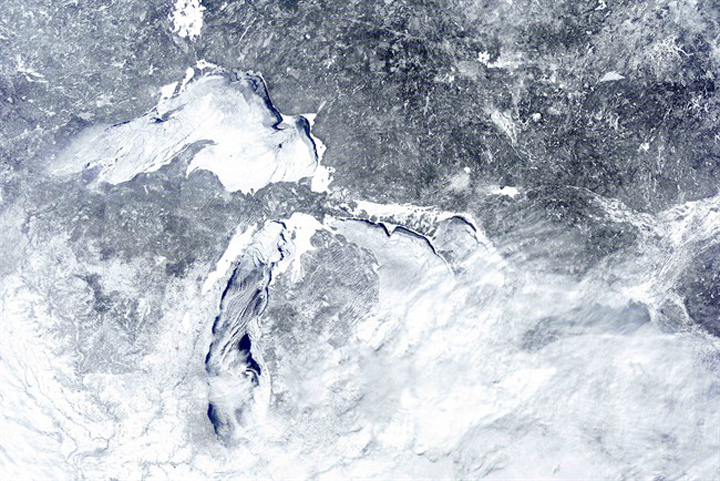The Canadian Shipowners Association wants more icebreakers to open up the frozen Great Lakes and St. Lawrence Seaway for shipments of Canadian grain and other commodities.

Association president Robert Lewis-Manning says the worst winter in 20 years has clogged the important trade route with a broad cover of thick ice that is suppressing freighter traffic.
“Concerns over ice conditions and the ability of the Canadian Coast Guard to provide sufficient icebreaking has delayed the opening of the St. Lawrence Seaway past opening dates achieved in recent years,” Lewis-Manning said Tuesday.
“Despite Canadian government efforts to encourage the movement of Canadian grain, it will remain stored in ports such as Thunder Bay until icebreakers open ports and support ship movements.”
The association represents six companies that control a fleet of 83 freight vessels.
It warns the ice also threatens to delay shipments of iron ore, construction materials, salt and petroleum products.
Lewis-Manning said a few freighters are moving on some of the middle Great Lakes, but very slowly, and they must be escorted by either Canadian or U.S. icebreakers.
Officials with the coast guard could not immediately be reached for comment. Information posted on its website says it’s been a challenging year.
“The Canadian Coast Guard’s fleet of icebreakers is working hard to meet the increased demand for assistance this year as the result of severe weather conditions in many parts of the country in recent months,” reads the website.
- Honda expected to announce Ontario EV battery plant, part of a $15B investment
- Trudeau says ‘good luck’ to Saskatchewan premier in carbon price spat
- Canadians more likely to eat food past best-before date. What are the risks?
- Hundreds mourn 16-year-old Halifax homicide victim: ‘The youth are feeling it’
“The last time the Canadian Coast Guard encountered similar ice conditions was in 1994.”
The website says the coast guard planned to start icebreaking operations in Thunder Bay on Monday with the help of a U.S. Coast Guard ship.
Lewis-Manning said normal shipments on the Great Lakes may not be achieved until the first or second week of April, depending on the weather.
The seaway section between Montreal and Lake Ontario is scheduled to open March 31. Last year, that section opened March 22.
The ice problem comes as the federal government puts pressure on the big railways to step up shipments of a record Prairie grain crop, much of which remains in storage on farms and in grain elevators.
Farmers say the rail backlog is reducing the quality and price of the crop.
On Monday, the Manitoba government said it had secured a promise from the head of Canadian Pacific Railway (TSX:CP) to try to move more grain through the port at Thunder Bay to help alleviate the backlog.
Wade Sobkowich, executive director of the Western Grain Elevator Association, said as much as 30 per cent of grain from the Prairies is shipped on freighters through Thunder Bay.
He said the association wrote a letter to Fisheries and Oceans Minister Gail Shea a few weeks ago to urge the federal government to ensure that enough icebreakers were deployed on the Great Lakes and the seaway.
“This year we have a problem. We have a lot of grain. We need to use all of the ports available to use and run them to maximum capacity as quickly as possible,” he said from Winnipeg.
“And therefore we need to make sure we break up that ice and get Thunder Bay humming as quickly as possible.”
The shipowners association said the coast guard is doing the best it can with the resources it has, but suggests it has too few icebreakers to meet demand.
Lewis-Manning said the association would like to see three more icebreakers assigned to the Great Lakes and seaway.
“Disappointingly, the Canadian Coast Guard’s effort to commit the necessary resources appears to be late as it manages challenging winter conditions in many regions.”



Comments